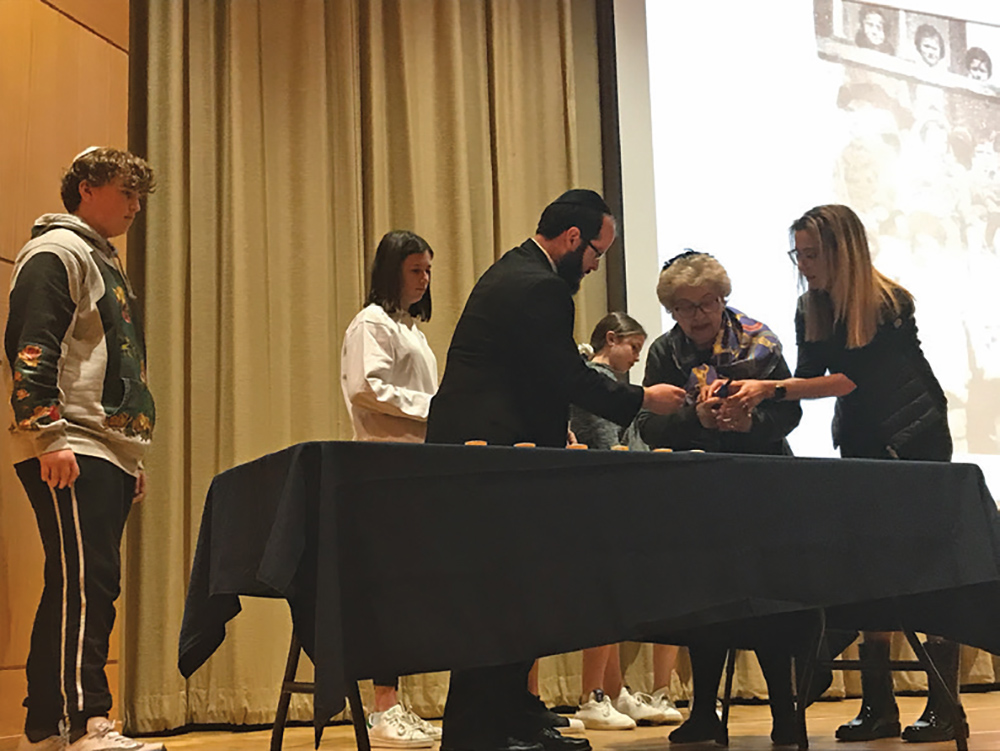

To commemorate Yom HaShoah, JKHA middle school and RKYHS students spent the day listening to meaningful programming and speakers, remembering those who were murdered and honoring those who survived.
Seventh and eighth graders were fortunate to hear from survivor, and JKHA/RKYHS grandparent and great-grandparent, Gladys Halpern. Halpern shared her inspiring story of being hidden by a righteous gentile, and her personal account of some of the extraordinary circumstances and challenges that she had to endure in order to survive.
Seventh graders also participated in a program that discussed the righteous gentiles in the Holocaust. Morah Shirley Gantz presented the question, “Am I my brother’s keeper?” (Bereishit 4:9): A question asked by many of the 27,000 Chasidei Umot HaOlam, or non Jews who risked their lives during the Holocaust to save Jews from extermination by the Nazis. The children heard stories of three heroic righteous gentiles and saw pictures of the memorial garden of the righteous gentiles at Yad Vashem.
Fifth and sixth graders watched the movie “Paper Clips,” about the unbelievable project embarked upon by a middle school in rural, heavily Christian Tennessee, that collected over six million paper clips to teach about the scale of the Holocaust.
Eighth graders also participated in a meaningful interdisciplinary program with their Judaic and general studies faculty on reactions to the Holocaust that built upon their study of WWII and the Holocaust through their reading of “Night” and “Maus.”
Students who read Elie Wiesel’s “Night” were keenly aware of how the Holocaust shifted Wiesel’s belief in God and Judaism. Students read other selections that provided an alternative response—stories from other survivors that showcased the hope and belief sustained by some people during the Holocaust. Drawing from Yaffa Eliach’s compilation, “Hasidic Tales of the Holocaust,” students read and annotated three stories in preparation for the program. Then, students read another story together for the first time as a group, unpacking why and how people can behave and believe even during the most tragic of times.








